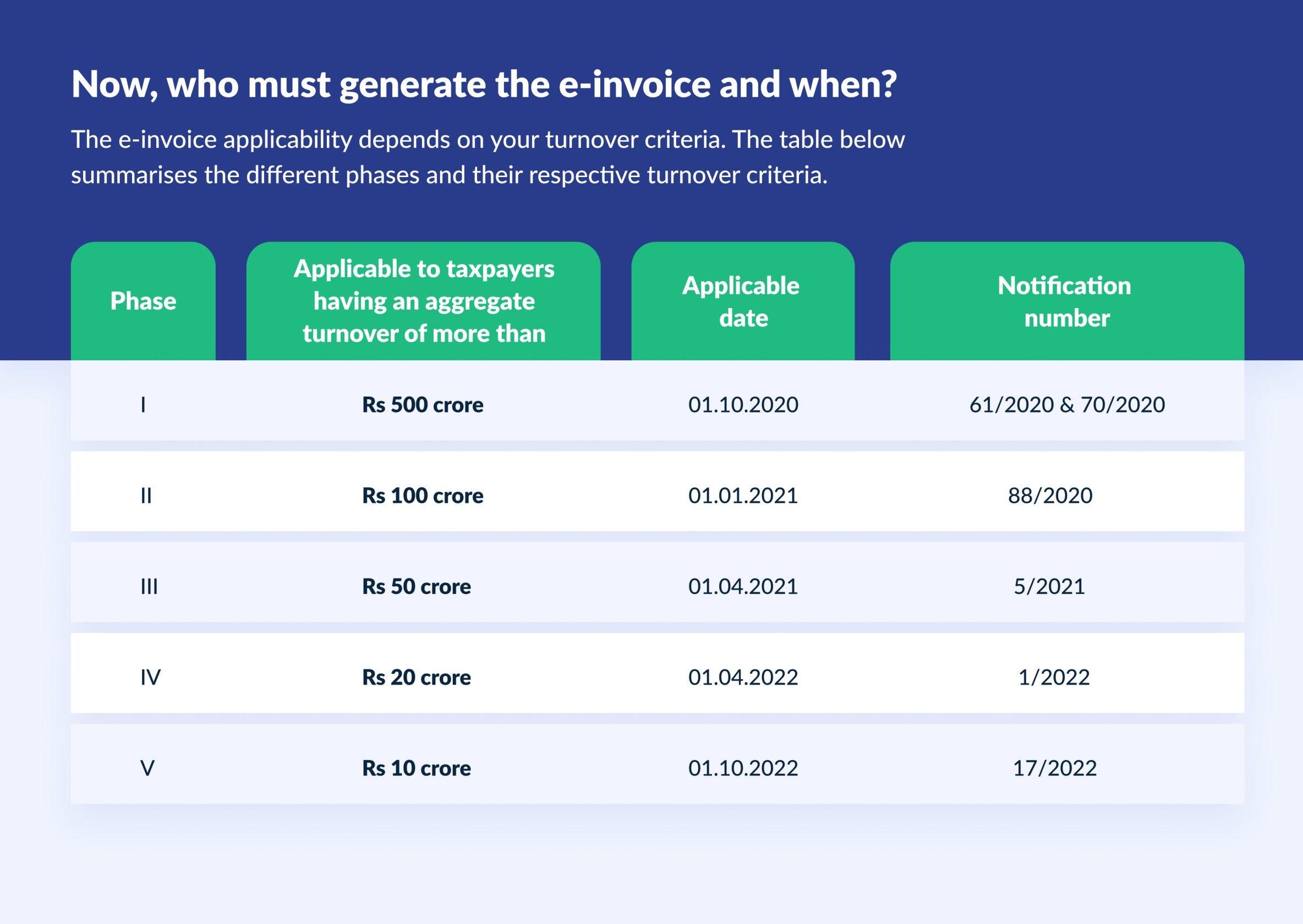What is e-invoicing under GST and who needs to generate it?



Since the introduction of the Goods and Services Tax (GST), all companies above a certain threshold of annual revenue have been mandated to apply for and obtain a unique GSTIN number. It is well known that GST has simplified transactions and taxation for businesses, especially those operating across multiple states. One of the major reasons for this simplification is the concept of e-invoicing.
In simple terms, E-invoicing refers to the process of transmitting your invoice data to the GST portal so that the transaction is recorded in the GST system instantly. Otherwise transactions get recorded only when the business files its tax returns. This system ensures that data is transmitted to the GST department as soon as the invoice is issued to customers. Over the years, this threshold for mandatory e-invoicing has been consistently brought down from initially covering only companies above Rs. 500 crores of annual turnover to now Rs. 10 crores of annual turnover. Government is further planning to reduce it to a threshold of Rs. 5 crores.
If your business is likely to cross this threshold this financial year, Please read below to know more about e-invoicing, and prepare your organisation to get into the e-invoicing regime.
What is e-Invoicing Under GST and Who Needs to Generate It?
Are you a GST-registered business owner wondering about e-Invoicing under GST? Essentially, e-Invoicing refers to the electronic invoicing system mandated by the GST law for certain notified GST-registered businesses, where B2B invoices and few other documents are required to be authenticated electronically by GSTN.
But what exactly is e-Invoicing?
It's a system where B2B invoices and other relevant documents are authenticated electronically by GSTN (Goods and Services Tax Network) for further use on the common GST portal. Initially implemented for specific categories of persons, mostly large enterprises, e-Invoicing has now been expanded to cover mid-sized and small businesses as well.
With e-Invoicing, you don't need to generate invoices on the GST portal. Instead, you submit an already generated standard invoice on a common e-invoice portal. This automates multi-purpose reporting with a one-time input of invoice details.
Under the electronic invoicing system, an identification number (IRN) will be issued against every invoice by the Invoice Registration Portal (IRP) managed by the GSTN. All invoice information gets transferred from this portal to both the GST portal and the e-way bill portal in real-time. Therefore, it eliminates the need for manual data entry while filing GSTR-1 returns and generating part-A of the e-way bills.You just need to paste the IRN on the invoice and issue it to your customers.
Now, who must generate the e-invoice and when?
The e-invoice applicability depends on your turnover criteria. The table below summarises the different phases and their respective turnover criteria:

Note: If your previous year's annual turnover was below the latest threshold limit (currently Rs. 10 Cr) but increased beyond this limit in the current year, e-Invoicing would apply from the beginning of the next financial year. However, if your previous year turnover exceeds any newly announced threshold then you must comply with the e-invoicing from the date of notification itself. To simplify it further, on the date of a particular notification, you have to check your previous year turnover and assess if it falls under the threshold limit.
Example - ABC Ltd has a turnover of Rs. 12 Cr in FY 21-22. Notification 1/2022 was announced on 01.04.2022 mentioning a threshold of Rs. 20 Cr. Since ABC LTD turnover was less than 20 Cr in previous year, they are not obliged to follow e-invoicing in FY 22-23. After a few months, notification 17/2022 was announced on 01.10.2022 mentioning a threshold of Rs. 10 Cr. Here, irrespective of current year turnover, ABC LTD will have to follow e-invoicing with effect from 01.10.2022 as their previous year turnover is more than the threshold limit of Rs. 10 Crs.
How to plan if I am required or will soon be required to follow e-invoicing?
It is preferable that you move to an invoicing solution which is integrated with GST E-invoicing platform, where you can just push a finalised invoice data to GST portal on a click of button. There are many free and paid solutions available in the market. You can use the GST Department’s E-invoicing Solution, which is free to use, or paid platforms like Zoho and Clear.






